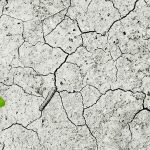Environmental Performance in the Cut Flower Industry

Horticulture may not be the go-to subject when it comes to performance management, however, it represents a specific industry branch where KPIs are indispensable.
Over the past few years, the cut flower sector has completely evolved, shifting towards global supply chains. A shift that enabled the industry to reduce costs and deliver products worldwide.
While focusing on a global supply chain may seem revolutionary and rather suited for today’s business reality, especially when we refer to fresh flowers, we do acknowledge that managing supply chains comes along with a lot of complexity and a highly important impact on environmental performance.
Properly managing a fresh flower supply chain involves sensitive settings when it comes to the processes involved in every junction of the chain, from cradle to grave, or in this case, from seed to your table. This can only be achieved through measuring and optimally managing key performance indicators.
When purchasing flowers, customer’s behavior is most likely influenced by a perceived level of quality, objectified in the aesthetic appeal of the product, the fragrance, the predicted vase life or the choice of packaging. However, recently consumers became more aware of the environmental implications of their possessions. Now, considering the actual context, some organizations promptly grasped the fact that maybe solely focusing on diminishing costs is not the way to go.

The cut flower industry is in fact a perfect example that depicts performance status as the condition of those organizations which excel not because they are profitable, but because they focus on eliminating waste and inefficiency. These can be key drivers not only for sustainable production, but for sustainable consumption.
Conventionally, this situation pushed most organizations towards offshoring, but what if instead of striving to identify the cheapest alternative we would focus more on vendor selection, supply chain integration and environmental sustainability? What if we would consider post-contract supplier development and continuous improvement? Once we agree that this is a two-way street, we can start to compete in efficiency and effectiveness, this time using quantitative, relevant and comparable measures.
Flesh flowers come along with a specific, point-by-point movement, inventory and transportation process, where activities across the chain are closely interlinked. This requires a dedicated and effective relationship within the supply chain, one that is going to display a clear picture of what, how much and when to produce.
It is important to understand that as the orders streamline across the supply chain, there is a critical point in time that indicates certain levels of quality, and this usually concerns the flower breeder. Continuing from here, quality can no longer be enhanced, therefore every ensuing step focuses on preserving quality.

What this should tell you is that you cannot simply do it all by yourself. Your organization represents a part of an integrative system, one that should function in alignment with a common final goal.
There is no point in designing an astoundingly beautiful, genetically innovative, vase life extensive rose if it is not going to be properly handled in the future. Responsiveness, lead time or temperature are key factors that span across the entire journey. Focusing solely on your performance is just similar to being dehydrated and deciding to take a bath in order to fix the problem.
These difficulties can be tackled through a collective strategic approach to vendor support, engagement and supply chain management, one that encompasses a holistic perspective on performance and KPI integration in distribution, use or product design.
Measuring emissions to air, water and land, resource usage and focusing more on perfect order rates might be the way to identify any underlying issues and take the necessary steps towards improvement.
There is indeed no simple solution to measuring the impact of supply chains and environmental performance levels on one another, but what businesses can achieve is making smart, relevant, data-based decisions and therefore provide better products, bring less damage to the environment and optimize their use of energy, resources and hazardous substances. It is not an easy fix, but it is a long-term solution.
Image sources:

Tags: Environment performance, KPI, operational performance





